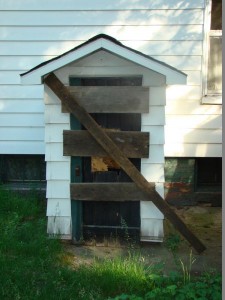
The Bay Area is a hard place to live. Ocean fog makes the summers notoriously frigid, you may be attacked by rogue circus acrobats at any moment, and for some reason there is just poop everywhere. Everywhere.
To make matters worse, housing costs have sky-rocketed to the point where mega-wealthy renters paying $10,000/month are being evicted to make room for the uber-wealthy, who are happy to pay twice or three times that. The city has turned from the site of the Summer of Love into a dystopia where there’s no middle-class, or upper-middle class, or even rich people. There’s the 0.01% and there’s everyone else, and it’s making people a little irate.
While the urban landscape is changing in response to the economic climate (it’s hot!), the ocean landscape right off the coast in SF Bay will be changing soon too, because of climate change.
This is especially problematic for the rare and endangered species that have already had to contend with human encroachment into their habitats. Often these encroachments require people to do something called “assisted colonization” where they actually move the plants, with the hopes that they will happily colonize new protected areas. But just like people being forced out of their homes by a changing economy, plants don’t always move willfully and they don’t always happily thrive after having been displaced. Basically, plants can be picky, like people can be picky: we want to live where we want to live.
Sea level rise from climate change adds a whole new layer to the challenge of protecting rare and endangered plants. If the sea level rises into unique coastal habitats, making them more like open-ocean, where will those coastal plants go? Can they move further inland, where new marshes will presumably develop? Is there even room for them to do so, or has human development reduced their ability to disperse?
Take for example the rare hemi-parasite (meaning it gets some of its nutrition from parasitism and some on its own gumption – think mistletoe) Chloropyron molle A. Heller subsp. Molle aka the rare plant called “soft bird’s beak”. This endangered plant lives in the salt marshes just north of the SF Bay. It’s a big fan of open areas, but is a little picky about sprouting, making it highly variable in numbers from year to year. Due to human encroachment (development, dyking and changing the hydrological regime, yeah we do that too) its habitat has been reduced by 50%. It’s also getting crowded out by invasive species and, oh yeah, apparently it’s popular with the feral pigs.
So, it’s awesome to be a rare plant!
With the prospect of sea level rise, there’s a whole new issue at hand. A key to any plant’s success is its ability to disperse, i.e. have its seeds move to new areas. And the “soft bird’s beak” plant doesn’t have a lot of dispersal options, because of the human encroachment and changing of hydrological regimes… and oh yeah, there are plants that already live there! It’s kind of like having to move to the East Bay for the cheap rents – there are already people living there and maybe they don’t want you crowding them out with your fancy rare plant vibe.
So what’s the answer? It gets really tricky; you could advocate for a “managed retreat”, demanding that people manage all components of an uphill ecosystem (from tidal flows to plant establishment) to create a new home for these rare plants. You could throw up your arms and say that these plants weren’t really long for this world. Or you could take some action now to reduce the risk of sea level rise in the future, nullifying the arguments and years it would take to legislate this sort of action.
My vote goes towards trying to act now to make sure the sea level doesn’t rise to keep these rare plants where they are. But in San Francisco keeping residents in their native habitats isn’t the most popular sentiment. It turns out that my opinions on this topic might make me the rare plant here. Think I’ll survive?
Further Reading:
I wonder where those rare plants lived 13,000 years ago when the ocean level was 130 m lower than today. But my tears are for those poor $10,000 a month renters being evicted.